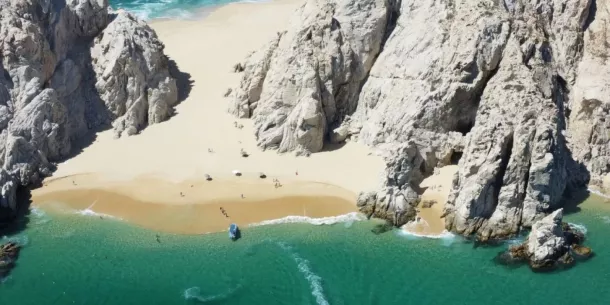
Cenotes from the Yucatan Peninsula are enchanting sinkholes, formed by collapsed cave systems, that offer a unique and mesmerizing experience.
In this guide, we invite you to explore the best cenotes in Tulum, each promising a magical journey.
The 10 Best Cenotes in Tulum: A Dive into Tranquil Beauty
1. Cenote Dos Ojos
Our first recommendation is the renowned Cenote Dos Ojos, translating to “Two Eyes” in English. This spectacular cenote system is a diver’s paradise, with crystal-clear waters revealing an underwater labyrinth. Snorkelers and divers alike will be captivated by the intricate cave formations and vibrant marine life.
2. Gran Cenote
For a serene and picturesque escape, Gran Cenote is a must-visit. Surrounded by lush greenery, this open-air cenote beckons travelers with its inviting waters and stalactite-decorated caves. It’s an ideal spot for those looking to relax in a tranquil environment while marveling at the wonders of nature.
3. Cenote Calavera
Venture into the mystique of Cenote Calavera, named after the skull-like openings in the ground. This unique cenote offers an adventurous twist with its three different entrances – perfect for the daring souls seeking an unconventional experience. Dive into the refreshing abyss and uncover the secrets of this hidden gem.
4. Casa Cenote
Immerse yourself in the harmonious blend of jungle and sea at Casa Cenote. This cenote, located along the coastline, provides a captivating fusion of freshwater and saltwater. Kayak through the mangroves, bask in the sun, and let the natural beauty of Casa Cenote enchant your senses.
5. Cenote Zacil-Ha
Embark on a cultural journey at Cenote Zacil-Ha, where the spirit of the ancient Mayan civilization echoes through the surrounding landscape. This cenote offers a serene escape with its lush surroundings and a connection to the rich history of the Yucatan Peninsula.
6. Carwash Cenote or Aktun Ha
Named after its historical use as a place to wash taxis, Carwash Cenote is anything but ordinary. Dive into its clear waters, adorned with colorful fish and mesmerizing rock formations. It’s a vibrant underwater wonderland waiting to be explored.
7. Cenote Cristalino
As the name suggests, Cenote Cristalino lives up to its reputation with its exceptionally clear waters. Nestled in a peaceful jungle setting, this cenote invites visitors to unwind and soak in the natural beauty surrounding them. Snorkeling here is a serene experience, offering a glimpse into an underwater paradise.
8. Cenote Jardín del Edén
Escape the crowds and discover the secluded beauty of Cenote Jardín del Edén. Tucked away in the jungle, this hidden gem is surrounded by lush vegetation and offers a peaceful retreat for those seeking solitude. It’s an ideal spot for introspection and connecting with nature.
9. Cenote Nicte-Ha
For a unique experience, visit Cenote Nicte-Ha during the evening hours. Lit up by enchanting lights, this cenote transforms into a magical realm after sunset. Take a moonlit swim and let the ethereal ambiance create unforgettable memories under the starlit sky.
10. Aktun-Chen
Combine adventure and education at Aktun-Chen, an eco-park featuring a stunning cenote. Explore the underground caverns, witness exotic wildlife, and cap off your day with a refreshing dip in the cenote’s rejuvenating waters.
What Are Cenotes & How Are They Formed?
According to the National Institute of Indigenous Peoples, the term “cenote” is exclusive to Mexico, originating from the Mayan word “dzonot,” which translates to “abyss.”
In the Mayan culture, cenotes were not only vital sources of life-giving water but were also revered as gateways to a sacred realm, facilitating communion with the divine.
The geological uniqueness of the Yucatan Peninsula plays a crucial role in cenote formation, with its soil acting as a sponge that absorbs rainwater. This absorbed water gradually dissolves the soil, creating caverns that can be partially or entirely submerged.
Cenotes emerge when these caverns collapse due to erosion, a process unfolding over hundreds of thousands of years. Cenotes exhibit various classifications, including open, semi-open, ancient, and cave cenotes, each showcasing distinct characteristics indicative of its age.
Since there are more than 3,200 cenotes in the region, it’s not rare to find some that are not as mesmerizing. Here’s our list of the 10 best cenotes.
Are Cenotes Safe?
Well-known cenotes, equipped with proper infrastructure, offer a secure environment for exploration. Nevertheless, when in water, it’s always crucial to be cautious.
Also, the natural formation process involves the occasional collapse of cavern roofs over extensive periods. Remote or unexplored cenotes may pose risks due to unpredictable conditions. This balance between awe and caution ensures a respectful and secure interaction with these geological marvels.
Ask your tour guide or tour company to further explain safety when visiting the cenotes.
How Deep Are Cenotes?
Cenotes exhibit varying depths that add to their allure. The depth of cenotes can range from a few meters to over 100 meters, presenting a diverse underwater landscape that reflects the geological complexity and beauty of these enchanting sinkholes.
Unveil the Wonders of Tulum with Lumina Stays
As you plan your Tulum adventure, consider making Lumina your home. We offer a new way to experience travel, providing beautiful, comfortable spaces that redefine the typical stay.












